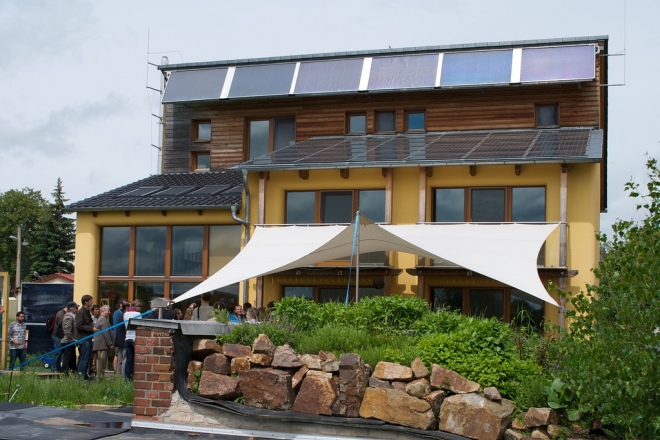
Passive Passion is a good 20 minute long film introduction to the German Passivhaus energy efficiency standard, which reduces building energy use by 80-95% (depending on what existing code you compare it to). It looks at the roots of the design standard in Germany, and gives a few examples from the tens of thousands of Passivhaus certified buildings in Europe, including single family homes, row houses, apartment buildings, public low income housing, and office buildings. They talk about what makes the standard work: airtight building envelopes, super insulation, no thermal bridging, heat recovering ventilation. The film also looks at a few builders and designers in the US trying to popularize the cost effective implementation of these methods. It’s clearly possible. The examples are out there today. We just have to decide to do it! If we’re going to get to carbon zero, someday our buildings will all have to function something like this.
The film can be viewed online thanks to the enlightened self interest of Four Seven Five, a high performance building components supplier in New York.
